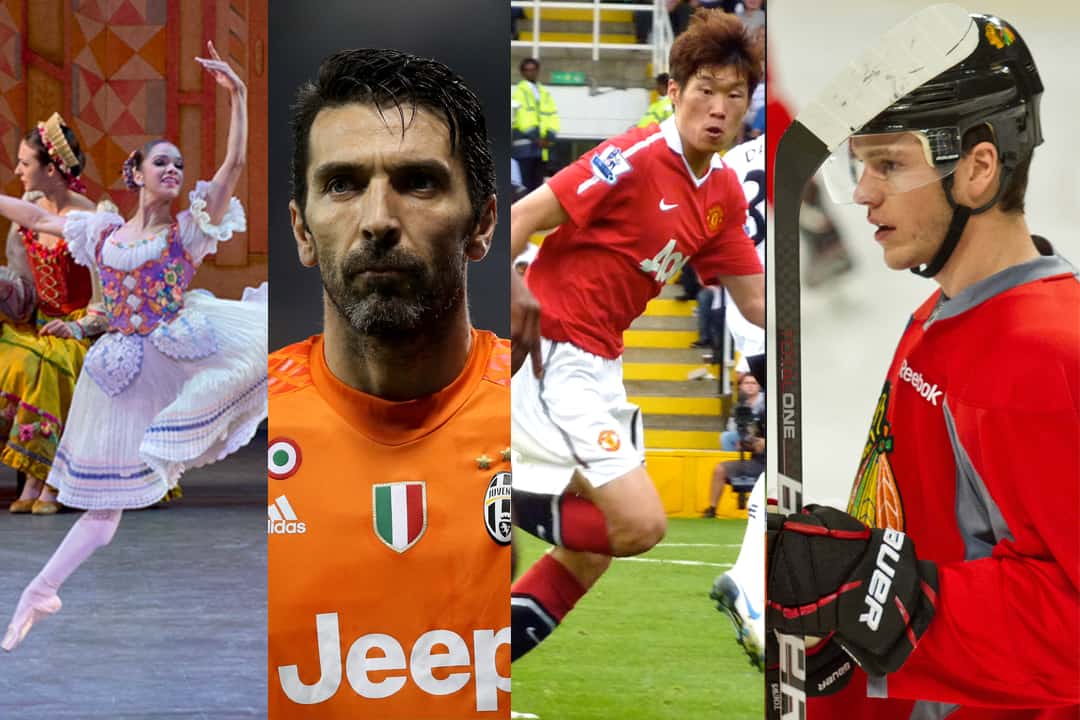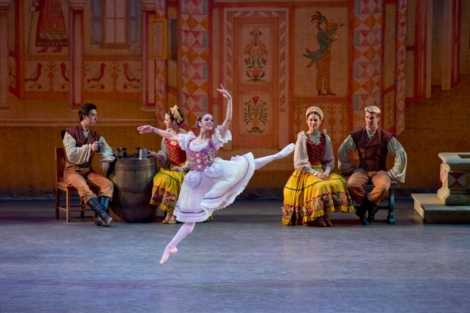
Misty Copeland. GILDASQUIRE/CC WIKIMEDIA
MISTY COPELAND
The beauty of Misty Copeland is in her intersectionality — she combines art with athleticism and strength with grace unlike any other. She has overcome painfully real barriers, and when I was a competitive dancer in high school, she was a beacon of hope.
Copeland is known for being the first Black woman to be named a Principal Dancer at the American Ballet Theater (ABT) in 2015, though she caught the public eye and my own attention before that.
The first time I saw a picture of her, I was stunned by her physique. There was something heartening in the broadness of shoulders and the fact that her thighs were actually wider than my forearms. She was a beautiful change of pace from the usual lily white, ultra-thin ballerinas who fill professional ballet companies.
Dancers’ athletic prowess tends to be overlooked or discounted more than that of athletes in other disciplines. Pointe — dancing on the tips of the toes in rock-hard shoes — is difficult, painful, and requires grueling work and dedication. You wouldn’t know it to watch Copeland, who performs effortlessly and with obvious joy. Still, she has been open about the bumpy road she traveled to achieve what she has.
Copeland struggled with an eating disorder when her body filled out, after suffering the ABT artistic staff’s not-so-subtle demands for her to lose weight. In an article she wrote for Self, she remembers being called in “for The Talk, and the bingeing began.” She endured a dark period in her life, but she eventually triumphed, emerging confident and unapologetic.
Subsequently, Copeland has become a pioneer: she looks strong in a crowd that leans toward looking sickly, and she has refused to let an unhealthy industry change her — instead, she is single-handedly changing the industry. She may be an outlier now, but the progress and hope that she embodies will inspire a new generation to follow in her steps.
— Blythe Hunter
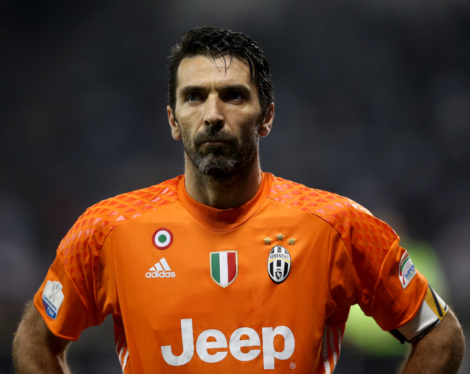
Gianluigi Buffon. DUDEK1337/CC WIKIMEDIA
GIANLUIGI BUFFON
I have participated in dozens and dozens of sports throughout my life — everything from land-based to aquatic. However, one sport that was near and dear to my heart was soccer, especially as an Italian. I played soccer for the better half of a decade and loved every minute of it. There is one memory about soccer that vividly stands out in my youth, and that was the 2006 FIFA World Cup.
As an avid defender and goalkeeper myself, watching the impenetrable Italian defense was mesmerizing. They were legendary. During that World Cup in particular, they only conceded two goals, thanks in part to their incredible goalkeeper Gianluigi Buffon.
He was 65 minutes shy of beating the World Cup record for the longest shutout streak, ironically held by another Italian goalkeeper, Walter Zenga, in 1990. Buffon was and still is at the root of Italy’s world-famous defense line. He is an inspiration and my role model.
Buffon is known by most as one of the greatest goalkeepers of all time, which only seems fitting because he currently holds numerous records at club level, including one for the longest streaks without conceding a goal.
Despite Italy’s failed attempt at qualifying for the World Cup this year, there is no denying Buffon’s sheer talent and skill. It is why he was named in FIFA 100’s list of the world’s greatest living players in 2004, won Serie A Goalkeeper of the Year award a record 12 times, and is the only goalkeeper ever to have won the UEFA Club Footballer of the Year. As he once said in an interview, “If I do something, I do it with the idea to get to the top — without that, I would stop living.” It’s a motto I haven’t stopped living by.
— Jordan LoMonaco
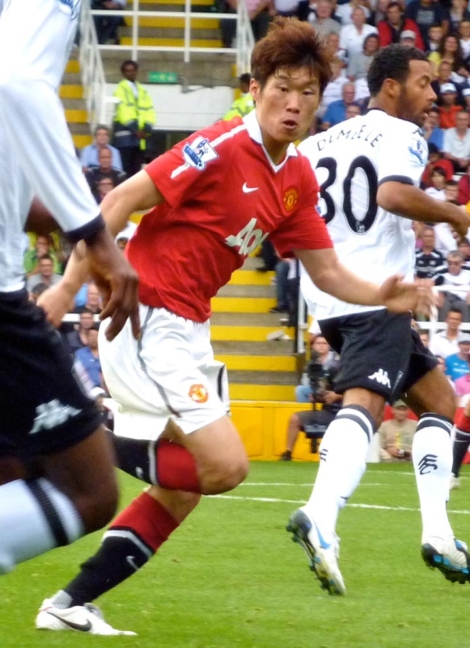
Park Ji-Sung. CROPBOT/CC WIKIMEDIA
PARK JI-SUNG
As an Aston Villa fan from Ajax, I would often eschew the traditional Saturday morning cartoons in favour of low-resolution broadcasts from Birmingham, watching the rise of English stars Gareth Barry, James Milner, and Gary Cahill. Even when I played for my local club’s youth teams, I used to try to emulate my heroes, wondering if I could get the job done on a cold, rainy night in Stoke. But despite my loyalty to the claret and blue, I soon developed a soft spot for Manchester United, and that was all thanks to Park Ji-Sung.
The time of the classic English 4-4-2 was drawing to an end, and with it was Sir Alex Ferguson’s reign. His fledglings of the Class of ’92 had moved on, save Paul Scholes, Ryan Giggs, and Gary Neville. Phil Neville moved to Everton, and Nicky Butt left for Newcastle, while David Beckham departed for Madrid. It was the Prem in the mid-noughties, and Sir Alex’s Red Devils sought aid for their thinning midfield, finding it in an up-and-coming South Korean midfielder from PSV Eindhoven.
In his playing days, Park was a hardworking and consistent midfielder with the ability — and willingness — to play whatever position he was asked. Be it in the wide midfield positions, or a more central role, Ferguson relied on him to put in a good effort for his side, particularly in big games against talented opposition.
Though he was technically unspectacular, Park always paired his otherworldly work ethic with intelligent movement off the ball, which ultimately led to him enjoying seven trophy-laden seasons in the red half of Manchester. His teammates and manager at United were always quick to sing his praises to the media, but no praise was higher than that of Italian legend Andrea Pirlo, who described Park as being “the first nuclear-powered South Korean in history, in the sense that he rushed about at the speed of an electron.” Poor Pirlo always had a rough night when his AC Milan came up against Fergie’s United, as Park Ji-Sung would be the man to mark the playmaker nearly out of existence. With versatility and work ethic not seen since Rinus Michels’ Total Football, Park was the ideal team player and the crutch that supported the world’s best club.
— Matthew Gene
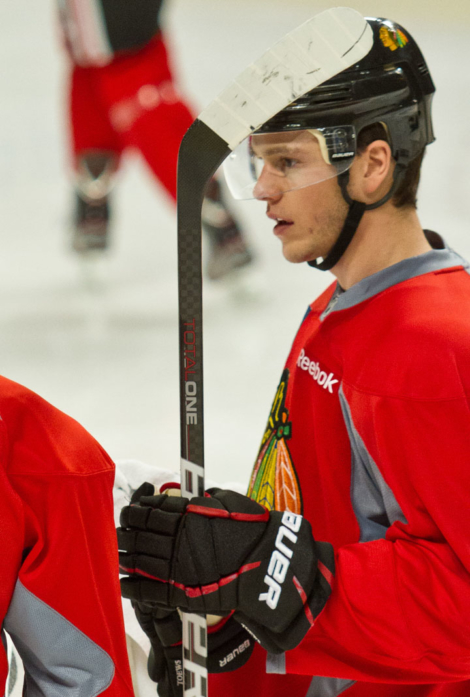
Jonathan Toews. SECRETNAME101/CC WIKIMEDIA
JONATHAN TOEWS
Growing up in a no-Jets Winnipeg, there were few sporting events that inspired pride, happiness, or excitement. My family and I would go to Manitoba Moose hockey games and even attended a Winnipeg Goldeyes baseball game once, but the two minor league teams did little to build a potent sports atmosphere throughout the city. The Blue Bombers — Winnipeg’s CFL team — hadn’t won a cup since 1990, and overall, there was little to be excited about when it came to sports. The legacies of Bobby Hull and Dale Hawerchuk were all that was keeping any hockey spirit alive.
And then, in 2010, Jonathan Toews captained the Blackhawks to their fourth Stanley Cup — bringing victory to Chicago and pride to Winnipeg. It was an exciting moment. Raised in St. Vital — a neighbourhood 15 minutes away from the one I grew up in — Toews was Winnipeg’s proudest export: an athlete who represented the city on and off the ice. At 22, he already had a key to the city and a lake named after him — yes, in northwestern Manitoba exists Toews Lake.
I remember being confused about why my dad was so happy about the Blackhawks’ win. “Their captain is one of our own!” he explained. That was the moment I began to understand the importance of representation and inclusion in sports. We look and cheer for people who come from the same backgrounds as us — ones we can relate to. Toews’ French in bilingual interviews stands as a staunch reminder to Winnipeg’s often overlooked francophone community. He plays, speaks, and behaves like a Winnipegger, and when I think of childhood hockey heroes, Toews is the first to come to mind.
I now live in Toronto, and I am subsequently a diehard fan of all things Blue Jays, Raptors, and Maple Leafs. Living in a city where sport developments and teams are the definition of exciting, how much Toews meant to Winnipeg back in 2010 is put into perspective. We didn’t have young phenoms like Auston Matthews and Marcus Stroman playing for us — our own phenoms were playing across the border, but that didn’t stop us from cheering loudly and proudly.
— Michelle Krasovitski

